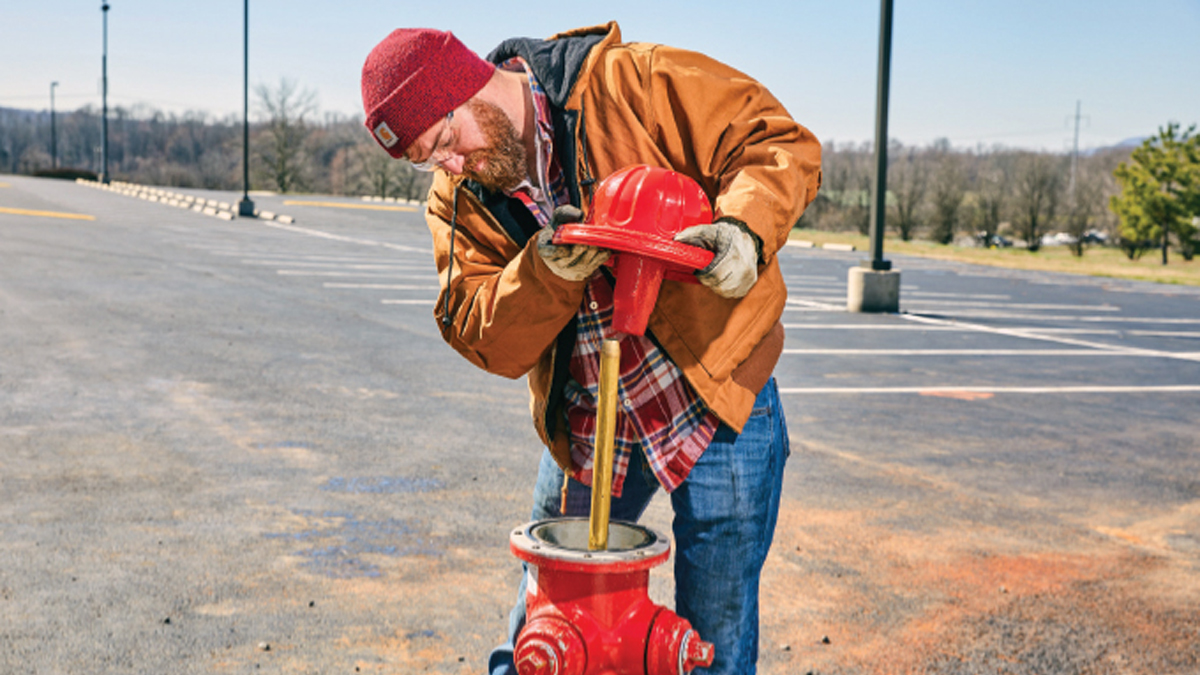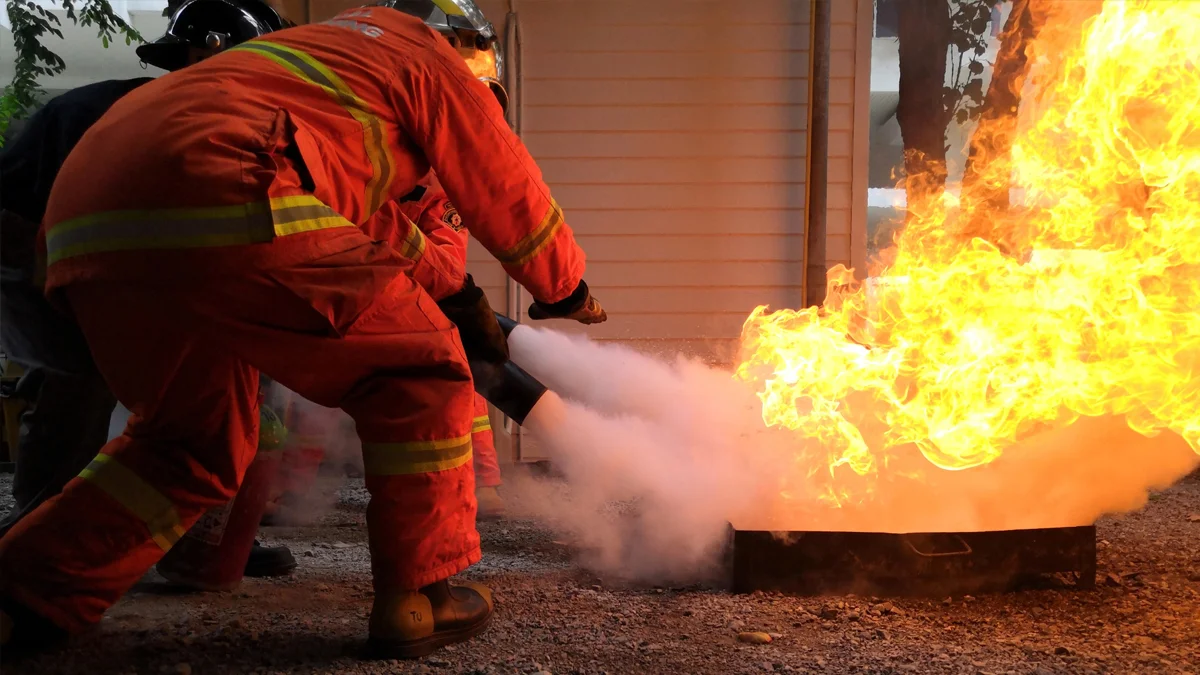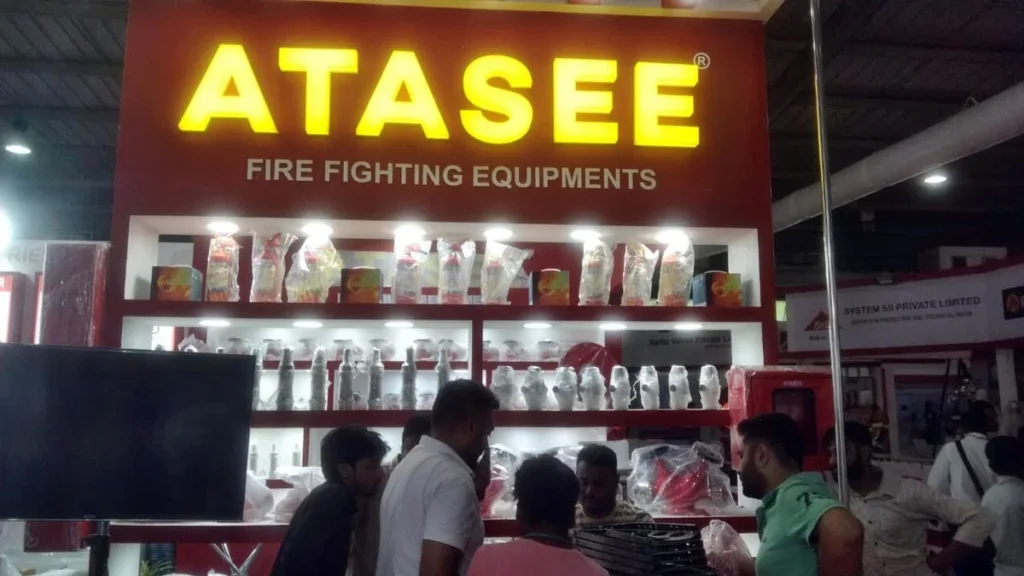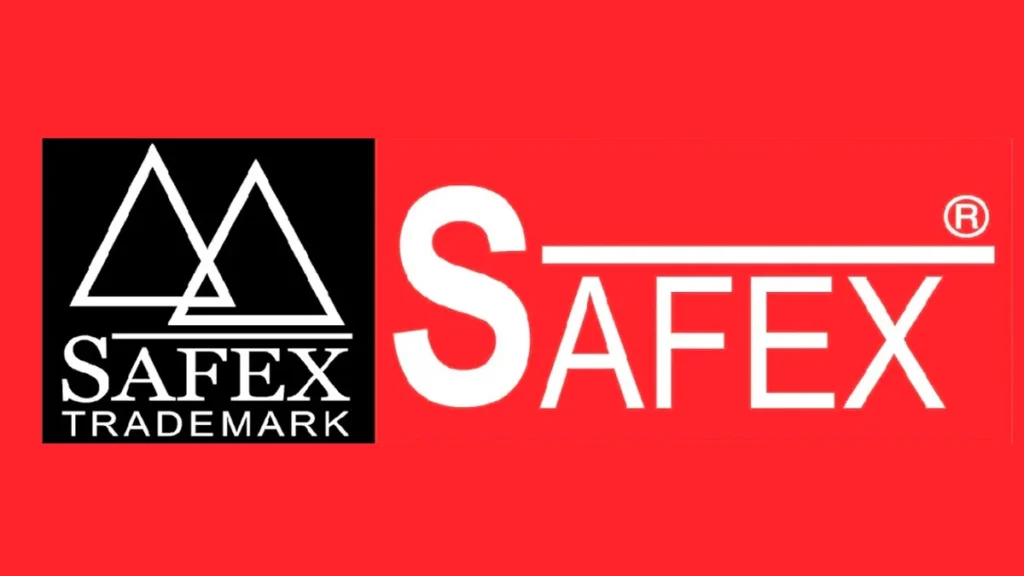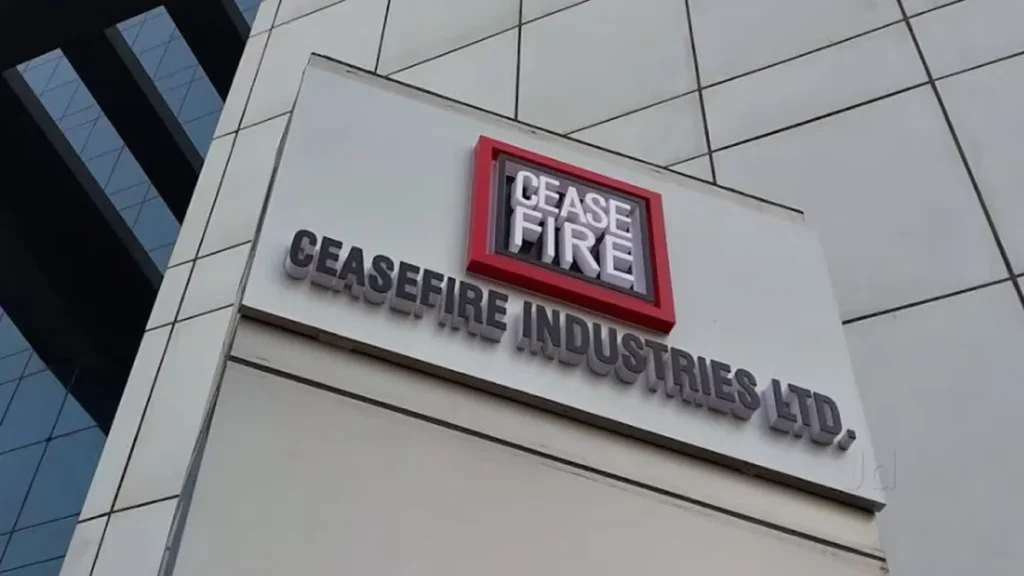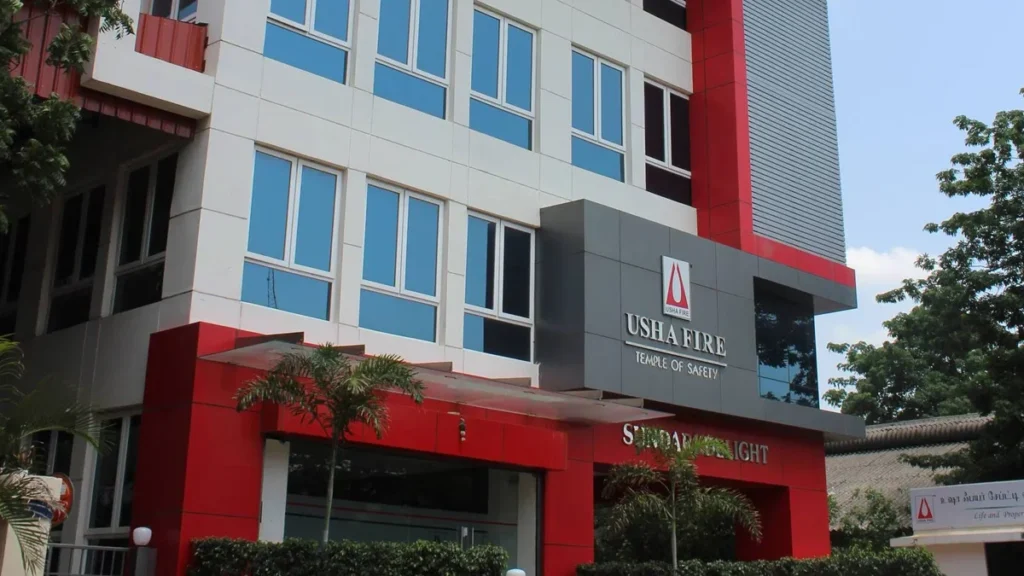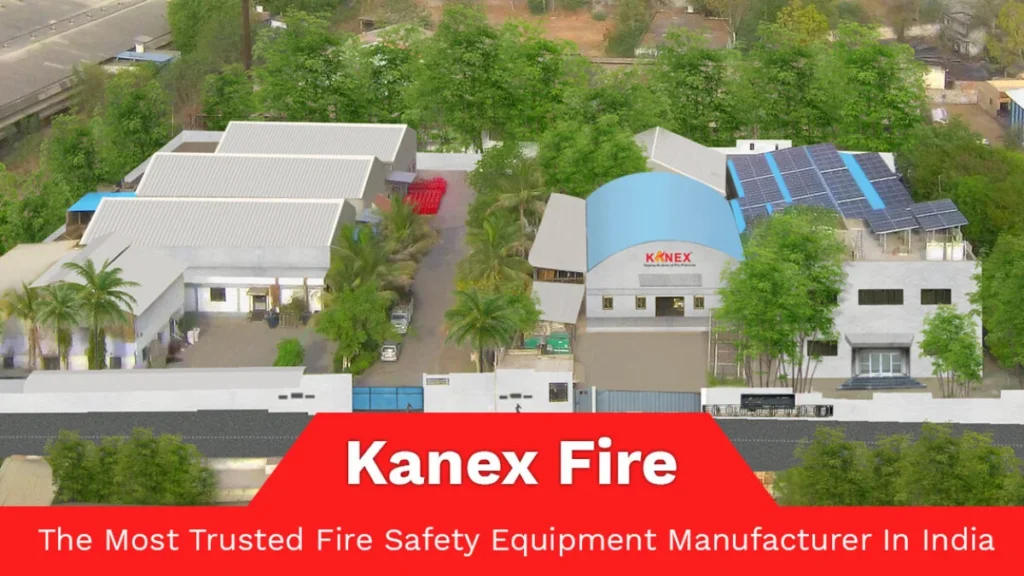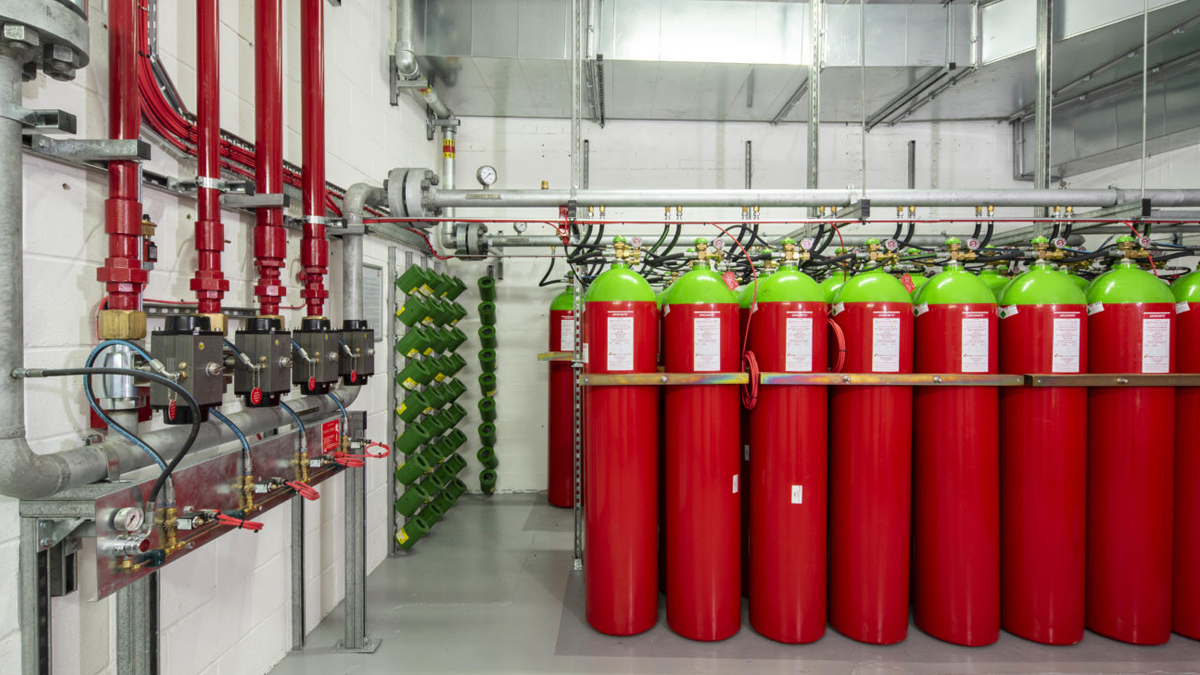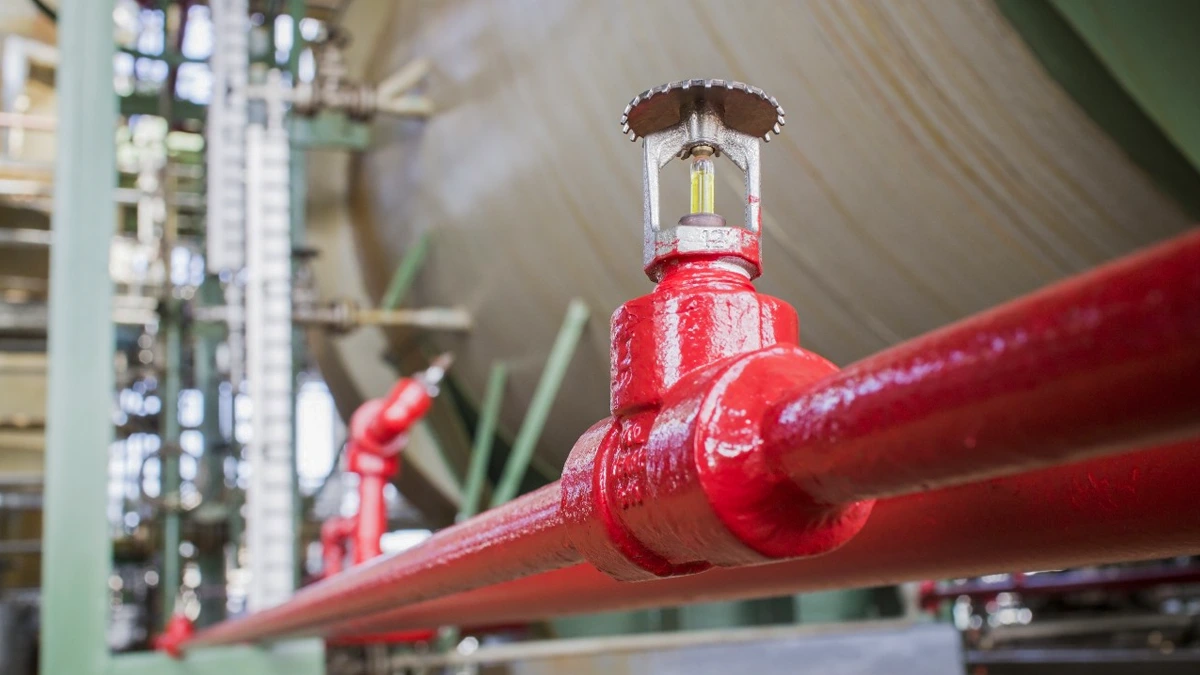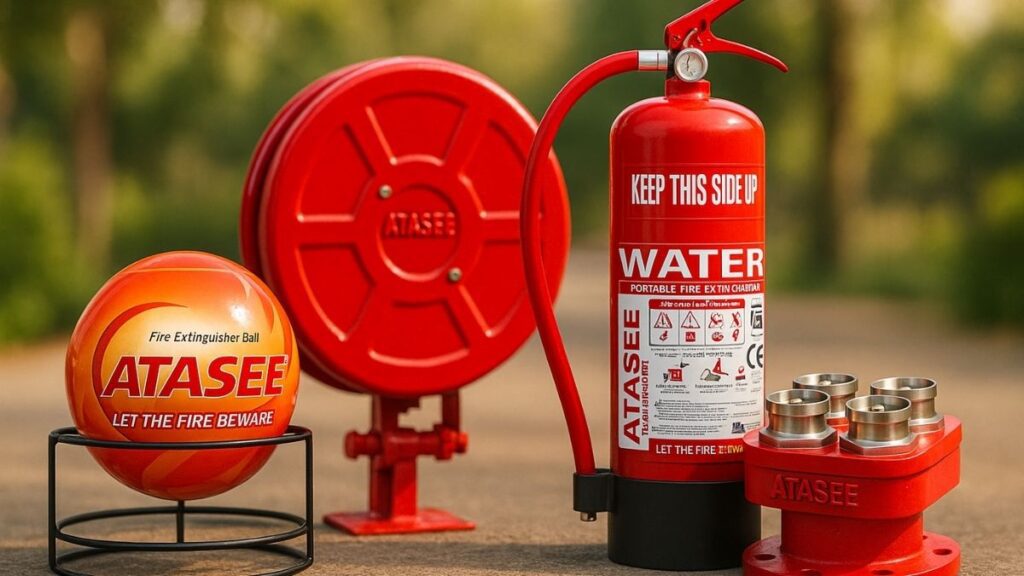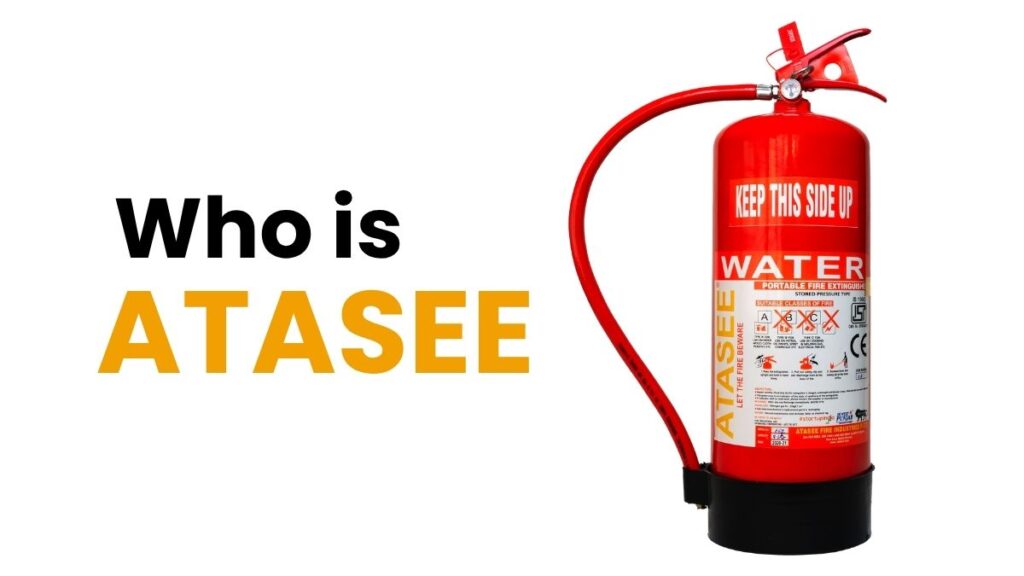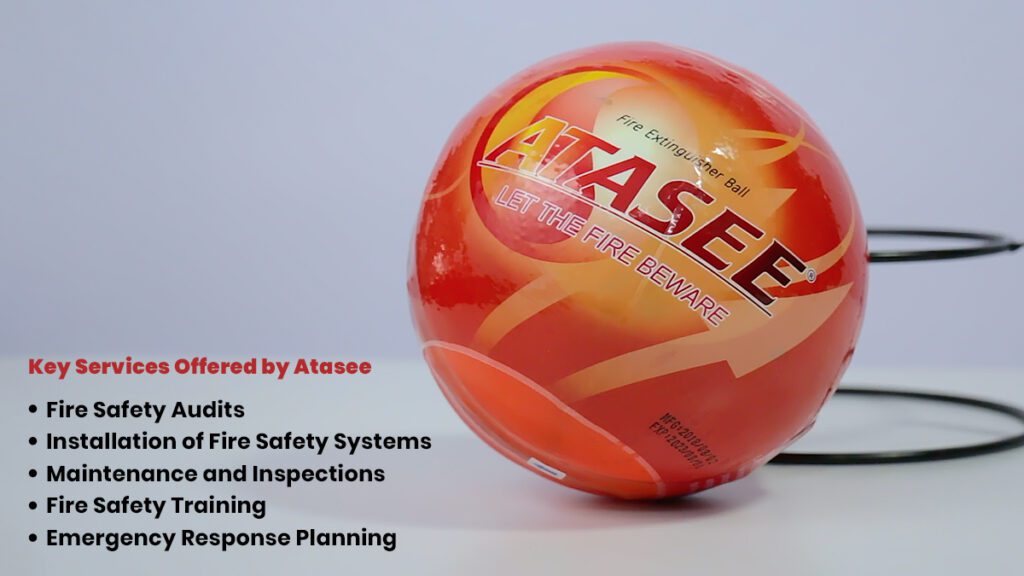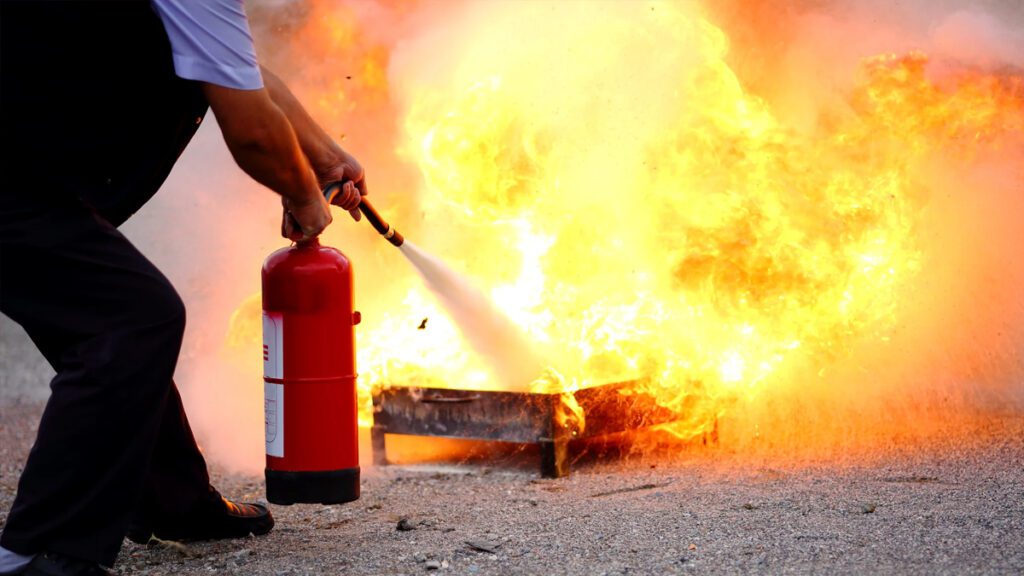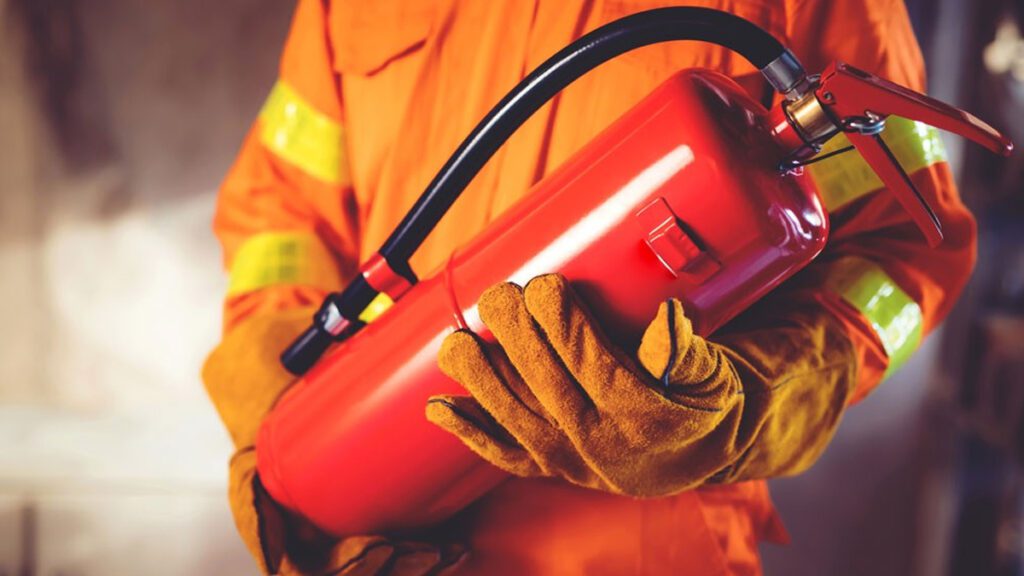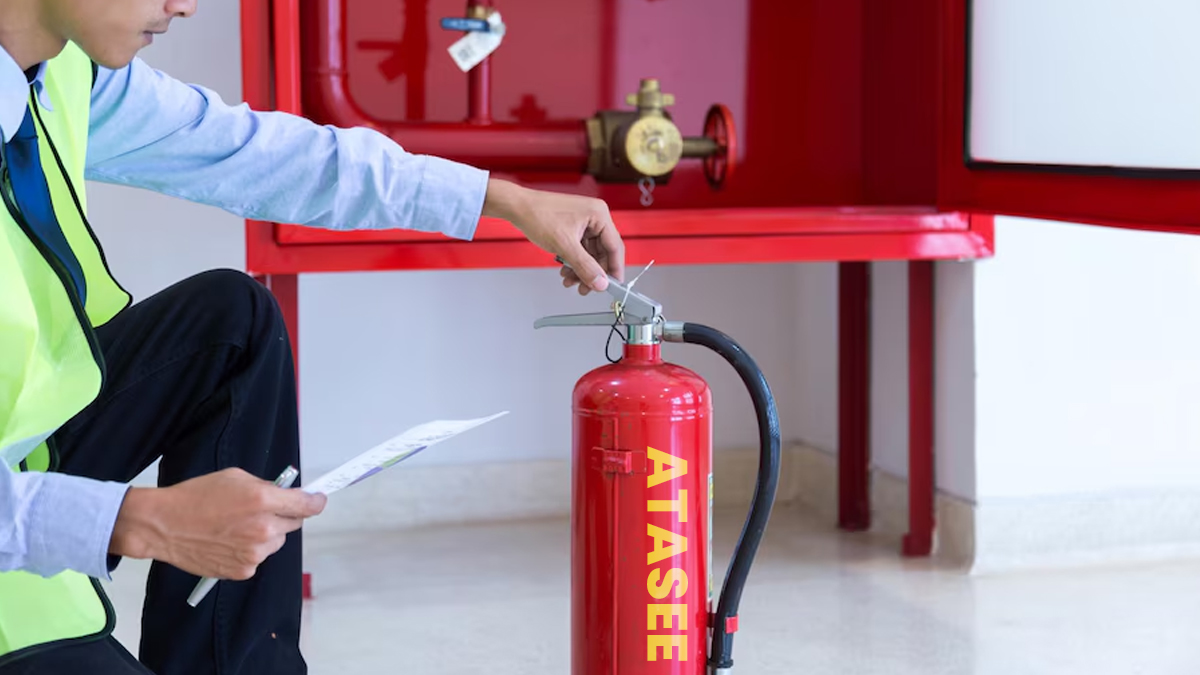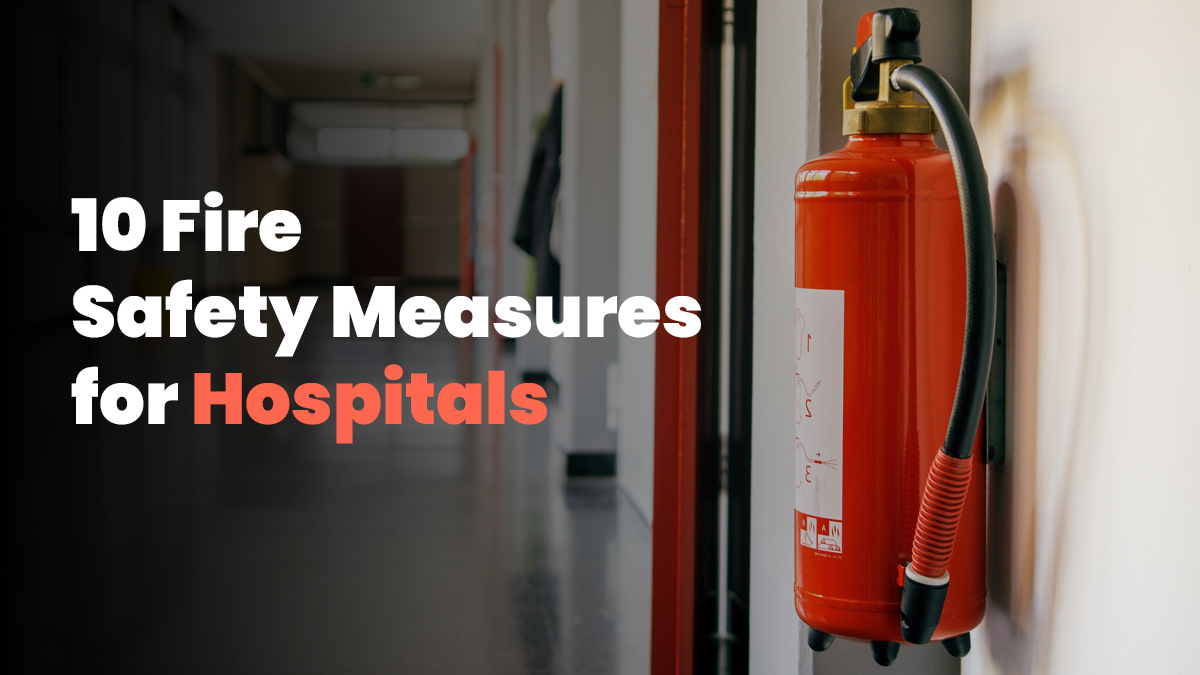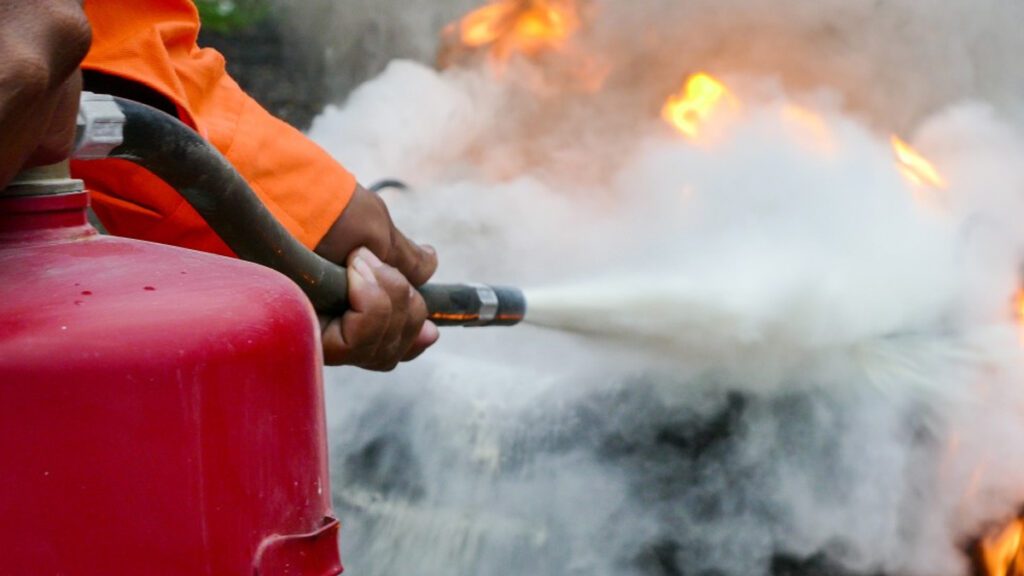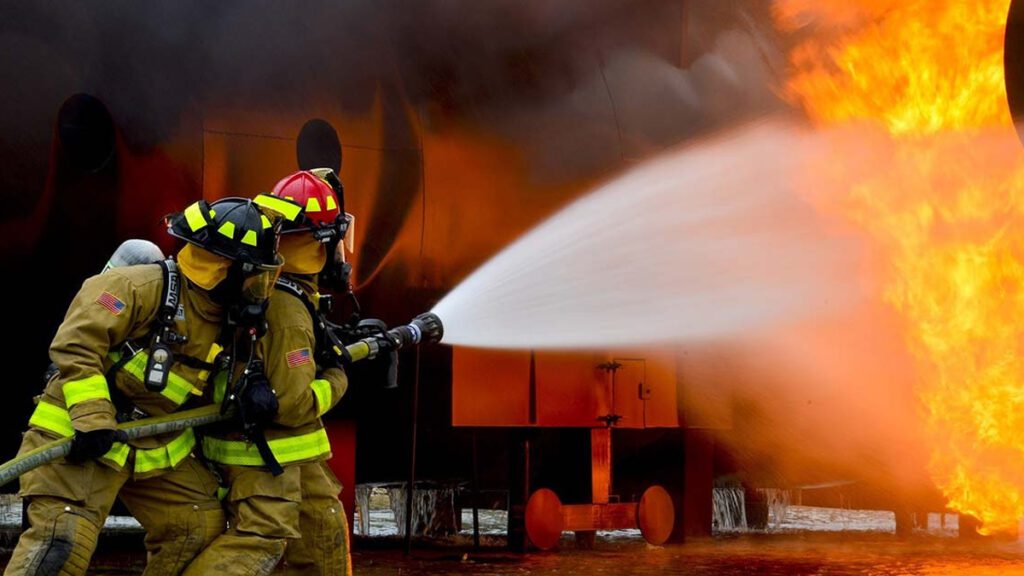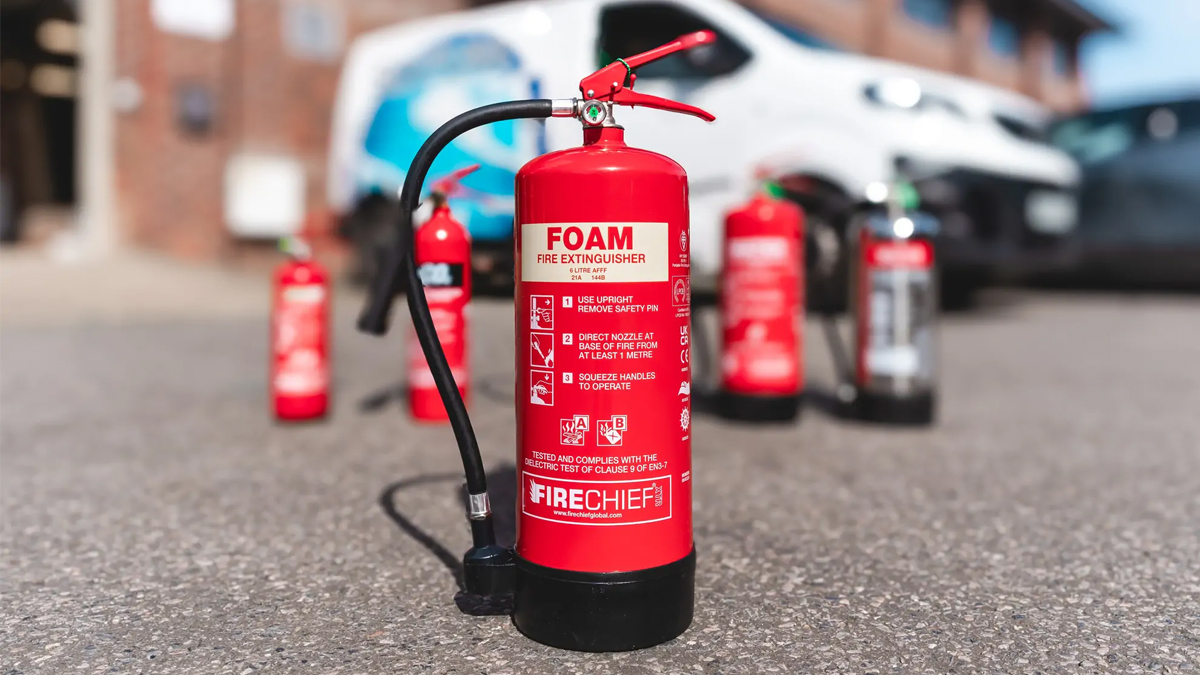
No single extinguisher can tackle every fire. Every type of fire extinguisher is suitable for different types of fire, choosing can be a minefield.
First, we look at different types of fire extinguishers present in the place to be protected from fire. There are five types of fire extinguishers with different substances:
What Are Foam Fire Extinguishers?
Foam fire extinguisher uses a mixture of water, air, and foam to put out from the fires. It works by protecting the fires with a thick covering of foam that extinguishes the fire and denies it oxygen. This stops the fire from re-starting. It can be used on different types of combustible materials, like wood, paper, cloth, flammable oils, diesel fuel, and alcohol. Foam fire extinguishers are best for many types of fire risk use.
What Are the Different Types of Foam Fire Extinguishers?
Foam fire extinguishers, generally Aqueous Film-Forming Foam (AFFF) extinguishers, are highly effective for certain types of fires. They work by forming a film that stops the fire, making them the best choice for specific scenarios. Let’s discuss the different types of foam fire extinguishers:
Synthetic Foam Extinguishers
Synthetic foams are made using synthetic surfactants to enhance their flow. It allows the foam to spread quickly over hydrocarbon-based liquids, performing a quicker knock-down result. However, these extinguishers can pollute groundwater and offer limited protection after the fire has been extinguished. In this there are two main types under this category are:
- Aqueous Film-Forming Foam (AFFF): Best for hydrocarbon fires.
- Alcohol-Resistant Aqueous Film-Forming Foam (AR-AFFF): Designed to combat fires using alcohol-based liquids.
Protein Foam Extinguishers
Unlike synthetic foams, protein foams spread more slowly but are more durable and heat-resistant. It is made from natural proteins, making them environmentally friendly and biodegradable. Here are some examples of protein foam extinguishers:
- Alcohol-Resistant Film-Forming Fluoroprotein (AR-FFFP): Effective for alcohol-based fires.
- Fluoroprotein Foam (FP): Provides better heat resistance for hydrocarbon fires.
- Alcohol-Resistant Fluoroprotein Foam (AR-FP): Protects against alcohol and hydrocarbon fires.
- Regular Protein Foam (P): A basic choice for general hydrocarbon fires.
- Film-Forming Fluoroprotein (FFFP): It connects fast-spreading capabilities with protein-based belongings.
Suitability and Usage
Foam fire extinguishers are not used everywhere but are useful for fires caused by flammable liquids and solids. They are utilized in offices, homes, and industrial settings. These extinguishers are universal but should be selected according to the specific risks present in the environment.
With these different types of foam fire extinguishers and their applications, you can make an informed decision about whether to use them in your home or workplace.
How Do Foam Fire Extinguishers Work?
Foam fire extinguishers are more effective than water extinguishers for controlling limited flames. They use Aqueous Film-Forming Foam (AFFF) to cool the fire while cutting off its oxygen supply.
The foam contains a mix of Film-Forming Fluoroprotein, alcohol-resistant foams, film-forming foams, water, and air. It works well on flammable solids and burning liquids.
When sprayed, the foam spreads over the flames to cool them and block oxygen. For liquid fires, the foam floats on the surface, cooling the liquid and extinguishing the fire effectively.
Where Can Foam Fire Extinguishers Be Used?
Foam fire extinguishers are ideal for buildings with textiles, wood, or other flammable solids that cause Class A fires. They are also suitable for locations using or storing flammable liquids like petrol, kerosene, diesel, alcohol, and oils, which can cause Class B fires.
These extinguishers effectively control burning liquids and flammable solids that haven’t yet grown out of control. However, they are not prepared to tackle runaway fires.
Foam extinguishers are generally found in factories, offices, warehouses, garages, and hostels, often paired with CO2 extinguishers. Businesses are legally required to have at least two Class A extinguishers on each floor.
Available in sizes like 2-liter, 3-liter, 6-liter, and 9-liter, the choice of extinguisher size depends on the fire risk level at the site, with the 6-liter being the most common.
Why Should You Choose Foam Fire Extinguishers?
- Foam fire extinguishers are affordable and easy to maintain.
- These are highly portable.
- Foam extinguishers can be recharged.
- These are effective on Class A and B fires.
- These are made with all-metal valves, steel cylinders, and a nozzle.
- These are available in held pressure and cartridge ideals.
How Do You Select the Right Foam Fire Extinguisher?
When selecting the right foam fire extinguisher, take into account the kind of fire you are most likely to experience (usually Class B flammable liquids), the size of the likely fire, the foam’s expansion ratio, and whether you require a particular foam formulation for the application, such as protein foam or AFFF (aqueous film-forming foam). You should also make sure the extinguisher is manageable in regard to weight and size so you can use it smoothly.
Modern foam extinguishers have improved significantly, replacing thick, smelly foams with sleek designs featuring a blue band above the label. Foam extinguishers are ideal for fighting fires from solid combustibles like wood and flammable liquids such as petrol. The foam penetrates quickly into burning materials or liquids, making it highly effective for controlling fires. It is always used in offices, factories, warehouses, garages, and hotels.
Advantages of Foam Fire Extinguishers
Foam fire extinguishers are usually used to manage fires in residential and business properties. They have many advantages, including:
- Secure for use: Aqueous Film-Forming Foam is non-toxic with safe for human use.
- Won’t cause electrical fires more harmful: If foam extinguishers are used to spray directly onto ignited electrical appliances, they are unlikely to contribute to the flames, because they are not highly effective or recommended for use on electrical fires.
- Reduced risk of damage: Although it cannot be certain, foam from a foam fire extinguisher is uncommon to harm surfaces.
- Lower probability of re-ignition: Because foam extinguishers smother flames, there is very little possibility that a fire will ignite.
- Simpler to use: A foam extinguisher is likely less heavy than its water equivalent.
Disadvantages of Foam Fire Extinguishers
Although the advantages of a foam fire extinguisher are great, there are also certain disadvantages attached to a foam extinguisher. These are:
- It is not for best Class C fires: Foam fire extinguishers act on Class A or Class B fires. Utilizing a foam extinguisher on Class C to E fires could improve the volatility of any existing fires.
- Not best for utilizing electrical devices: If you utilize foam fire extinguishers on electrical devices participating in electrical fires, the result could be negative the fire will not be stopped and the electrical devices could be damaged.
- Can’t be held in cold areas: If a foam fire extinguisher is kept in a very cold environment, it may freeze.
- More expensive: A foam extinguisher is more expensive than a water fire extinguisher.
How Should Foam Fire Extinguishers Be Maintained?
Proper maintenance of a foam fire extinguisher is very important for its effectiveness. According to these simple steps help you to ensure it remains in good working condition:
- Visual Inspection: Regularly check for damage, corrosion, dents, and leaks, and ensure the label and safety seals are intact.
- Pressure Gauge Check: Confirm that the pressure gauge reading is within the acceptable range.
- Hose Inspection: Remove the discharge hose to check for blockages, cracks, or other damage.
- Weight Check: Weigh the extinguisher to ensure it is fully charged.
- Storage Conditions: Store it in a cool, dry place with good ventilation, away from sunlight and extreme temperatures.
- Professional Servicing: Have it serviced by a qualified technician as per the manufacturer’s instructions. This includes emptying, pressure testing, and refilling the unit.
Regular maintenance helps to ensure the extinguisher is ready for use when needed.
How Do Foam Fire Extinguishers Compare to Other Types?
Foam fire extinguishers are more versatile than water extinguishers, as they can handle both Class A (wood, textiles) and Class B (flammable liquids) fires, while water extinguishers are limited to Class A fires. Foam works by forming a blanket over the fire, cooling it, and cutting off oxygen, making it especially effective for liquid fires. They are also less damaging than dry powder extinguishers, which leave a significant residue.
Key Comparisons:
- Effectiveness on Liquid Fires: Foam is superior to water, floating on liquid surfaces to smother vapors and prevent reignition.
- Less Damaging than Powder: Foam causes minimal residue, unlike messy dry powder extinguishers.
- Electrical Fires: Some foams are safe near electrical equipment but not recommended for direct use on live fires.
- Composition: Contains a water-based foam mixture with AFFF, helping spread foam and block flames.
Comparison to Other Types:
- Water: Only for Class A fires, unsuitable for flammable liquids.
- Dry Powder: Works on various fire classes, including electrical, but is messy.
- CO2: It is best for electrical and small liquid fires but can replace oxygen in surrounding areas.
- Wet Chemical: It is designed specifically for Class F (cooking oil) fires.
Conclusion
Foam fire extinguishers are widely used to stop fires caused by flammable liquids and solids. It is known as Aqueous Film Forming Foams (AFFF) or Spray Foam Fire Extinguishers, they are versatile and effective indoors and outdoors.
These extinguishers are commonly used in warehouses, petrol stations, textile factories, and workshops where flammable materials are present. Modern foam extinguishers have improved significantly, replacing thick, smelly foams with sleek designs featuring a blue band above the label.
Foam extinguishers are ideal for fighting fires from solid combustibles like wood and flammable liquids such as petrol. The foam penetrates quickly into burning materials or liquids, making it highly effective for controlling fires.

